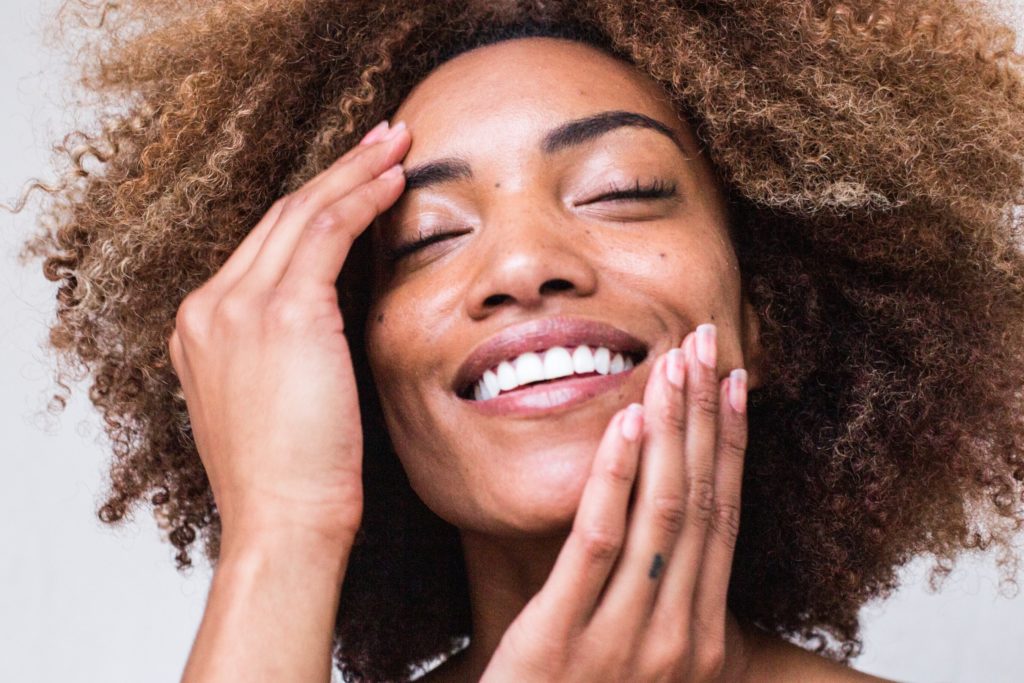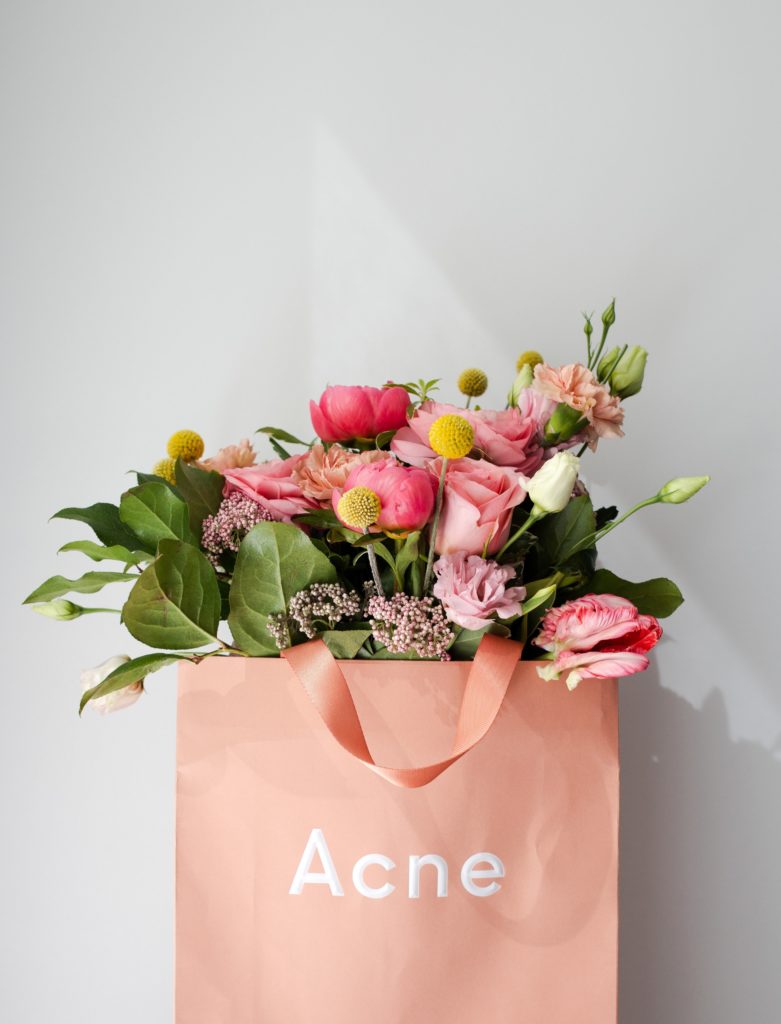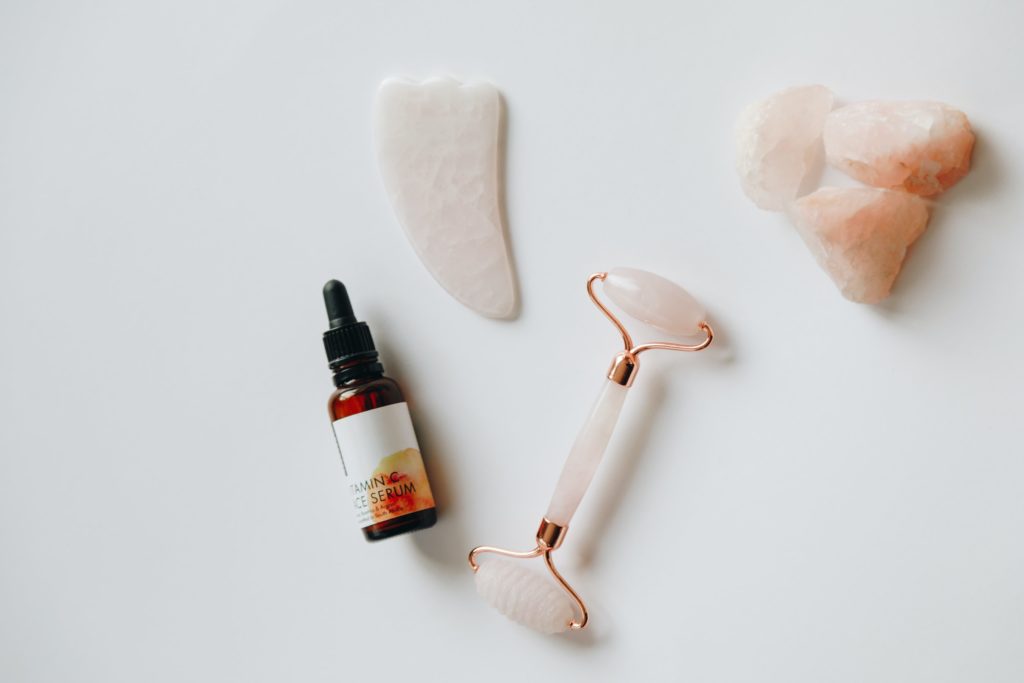Blemishes, zits, breakouts, whatever you call them, there are many different words to describe acne. Knowing the different types of acne is a challenge, but we’ve made it straight forward.
There is 6 different types of acne and even more ways to treat them. Knowing your skin before, during and after a breakout is crucial. If you can learn your bodies triggers and do preventative care, you’ll be able to manage and minimize the severity of acne breakouts.
What Is Acne?
Acne is a skin condition and there are numerous causes as well as symptoms. They are all similar in that they occur when pores or hair follicles become clogged with oil, dead skin or dirt. These plugged up pores can cause blackheads, pimples or whiteheads. It is common in teenagers and people during puberty but it can persist well into adulthood. Over 17 million people in the United States have acne, which makes it the most common skin condition.

@parkstreet
What Causes Acne?
We often hear the term “breakout” when describing acne, but that isn’t necessarily an accurate description. Not all types of acne occur all over the face or body. Some forms of acne are isolated to certain areas. These specific areas can help us find the cause and an appropriate treatment.
Clogged pores are the leading cause of acne but the reason your pores may be clogged vary. It could be because of:
- Hormones
- Bacteria
- Dead skin cells
- Excess oil production (sebum)
- Ingrown hairs
Different Types Of Acne
Finding out the type of acne you have can help you find the right treatment for your skin. Unfortunately, everyone is different and there isn’t a one size fits all to acne treatment. It may take some trial and error before you find what works for you. Acne is either inflammatory or noninflammatory and breaks up into 6 subtypes.
- Blackheads (open comedones) – Occur when a pore is clogged with sebum and dead skin. The pore stays open despite being clogged.
- Whiteheads (closed comedones) – Can also occur when a pore is clogged with sebum and dead skin. However, the tops of the pimple closes up and a small bump sticks out from the skin. These are difficult to treat because they are closed, but salicylic acid and topical retinoids can help with comedonal acne.
- Papules – Arise when the walls around a pore break down from inflammation. This leads to hard, clogged pores that are often painful.
- Pustules – Also occur when the walls around a pore break down. However, unlike papules, pustules are filled with pus. They are red bumps and often have a white head on the top.
- Nodules – Happen when clogged or swollen pores become more irritated and grow larger. They are deep beneath the skin and can’t usually be treated at home. Most doctors will prescribe oral medication.
- Cysts – Develop when pores are clogged by bacteria, dead skin and sebum. Cysts occur deep underneath the skin, even further than nodules. These are large red or white bumps that can be very painful. They can lead to infection and will most likely scar. Most doctors will prescribe medications for this type of acne.
It is possible that you can experience multiple types of acne all at once. In severe cases over-the-counter treatments may not work. If you are in pain or concerned about your acne, talk to a dermatologist.

1. Inflammatory Acne (moderate – severe)
Pimples that are red, swollen and often painful is called inflammatory acne. These acne spots can be difficult to get rid of and can lead to scaring. Dead skin, sebum and bacteria play a large roll in clogging up the skins pores. Bacteria can get into the skin and cause infections deep beneath the surface. It is important not to pick these blemishes because they scar and can become very irritated. With inflammatory acne, you are most likely to experience papules, pustules, nodules and cysts.
Treatment: Products that contain benzoyl-peroxide can help decrease swelling as well as get rid of harmful bacteria within the skin and remove dead skin cells. However, if it becomes unmanageable and painful, seek medical attention. Some symptoms, like cysts, can lead to infections and scaring. Your doctor may prescribe you oral medications or topical treatments.
Try This: Human Maximum-Strength Acne Wash has 10% Benzoyl-Peroxide and can be used on the face as well as the rest of the body. Not only is it dermatologist tested by also vegan and cruelty free.
2. Noninflammatory (mild)
Noninflammatory acne typically doesn’t cause swelling and includes blackheads as well as whiteheads. It can be caused from bacteria, dead skin cells or excess sebum. This can be brought on through poor hygiene, hormonal fluctuations, in grown hairs or even diet.
Treatment: Most over-the-counter treatments can help with noninflammatory acne. Look for products with Salicylic acid. It exfoliates and cleans the skin, removing dead skin cells. Look for cleansers, toners and moisturizers with Salicylic acid.
Try This: Paula’s Choice 2% Salicylic Acid exfoliant is excellent for blackheads, enlarged pores, wrinkles and fine lines. Additionally, it is non-irritating, fragrance free as well as cruelty-free.

@vivalunastudios
Different types of acne in specific areas
Acne that reoccurs in specific areas may be an indication of something. There have been heaps of acne maps floating around, unfortunately, they are not always accurate. Here is what it actually means when acne reoccurs in specific areas.
Hairline
Hairline acne can also be called pomade acne. Pomades can be found in hair products and are often thick as well as oil-based. This ingredient can keep sebum in our pores and hair follicles, which causes clogs that lead to zits.
Treatment: Stop using products with pomades, wash your face and exfoliate along the hair line. Even try an exfoliating or clarifying shampoo. Look for products that are noncomedogenic (non-clogging).
Try This: Aromatica Tea Tree Purifying Shampoo contains salicylic acid and works great for both an oily scalp or itchy scalp. Not only does Aromatica take the climate pledge but they are also vegan and cruelty-free.
Cheeks
Do you hold you phone right beside your face when making a call? This could lead to reoccurring acne on your cheeks. Additionally, dirty pillow cases can also be a trigger for cheek acne. Our phones have tons of bacteria on them and when we put them close to our faces, that bacteria enters our skin. Even touching your face can cause acne.
Treatment: Clean your phone regularly or use headphones/hands free when making calls. Avoid bringing your phone into the washroom with you, this can lead you to come into contact with harmful bacteria like fecal matter and E. Coli. In addition to a clean phone, ensure you wash your bedding at least once a week. If that’s not enough for you, you can throw a clean t-shirt over your pillows when you sleep.
Try This: Clean your phone throughout the day with PhoneSoap 3 UV Cell Phone Sanitizer. It is a charger and cleaner all in one!
Chin & Jawline
Chin and jawline acne is often caused by hormonal fluctuations. Usually it is a result of excess androgens which encourages the oil glands to over produce and block pores. This type of acne occurs during menstrual cycles or changing medications.
Treatment: Stay consistent with birth controls and medications. Hormonal imbalances can also be related to diet. If you have major diet changes and then a breakout, it could be because of what you ate. Cut back sugar, dairy, white bread and processed foods if you are struggling with hormonal acne.
Try This: Super Moon Balance Organic Superfood Mix. This powder can be added to water or smoothies and contains all sorts of excellent superfoods to help balance hormones and improve overall health.
Forehead & Nose
The T-zone is the area of your nose and forehead, which resembles a T shape. Breakouts in this area are often from overstimulated oil glands, stress, fatigue and touching your face. Studies show that stress doesn’t lead to excess oil production but can worsen symptoms of existing acne. Additional studies found that people who suffer from fatigue are more likely to have acne.
Treatment: A good night sleep goes a long way. Try reading or meditating before bed to exhaust your brain and encourage sleep. Avoid touching your face and practice good hygiene by cleansing, toning and moisturizing your face twice a day. Look for products that are noncomedogenic, oil-free and contain Salicylic acid.
Try This: Honest Beauty tinted Vitamin C moisturizer works amazingly to keep skin hydrated. It is non-comedogenic, contains SPF 30 and it’s vegan!

@hypethat
No two person is the same, and neither is acne. There isn’t a one-size fits all treatment for acne. However, there are many things you can do lifestyle-wise that can help. Ensure you drink plenty of water, practice good hygiene and watch what you eat. Additionally, always look for noncomedogenic products and don’t pick at your skin. Talk to a dermatologist if your acne is unmanageable or painful.
If you’re looking for products to try today, click the links and find affordable, vegan and organic skin care items we trust.
Read More:
6 Ways To Improve Sensitive Skin
